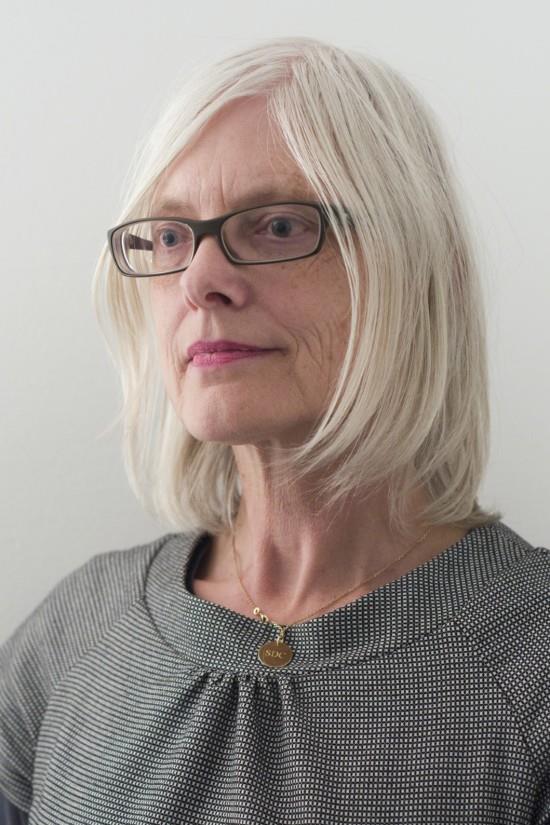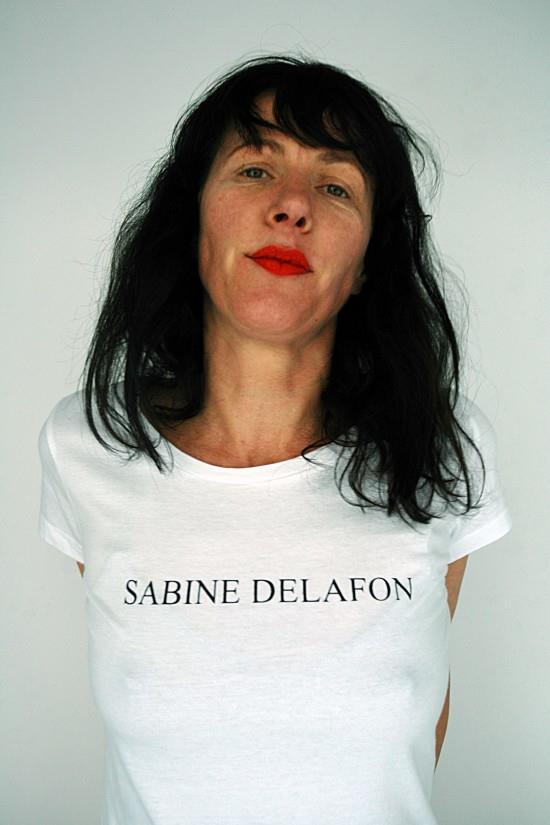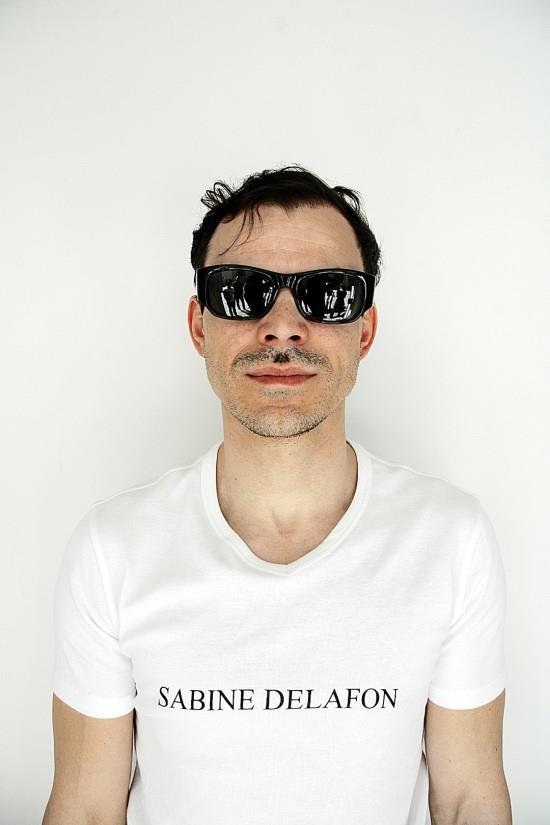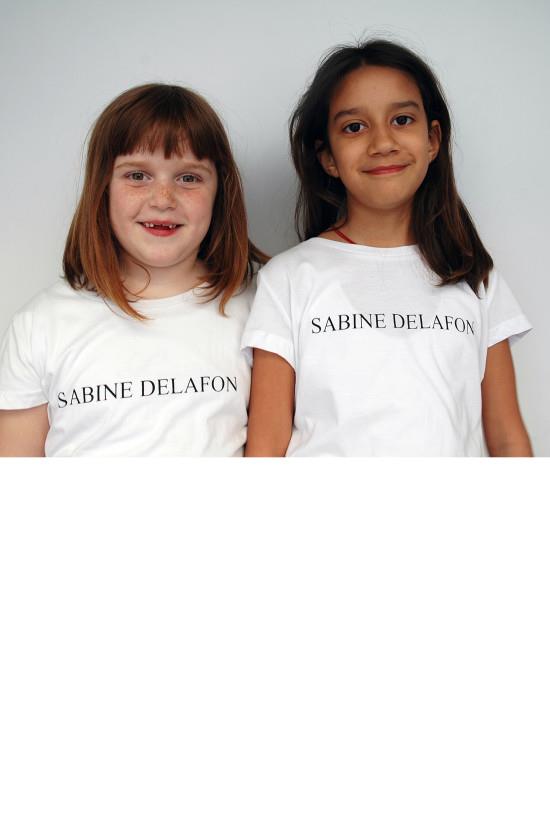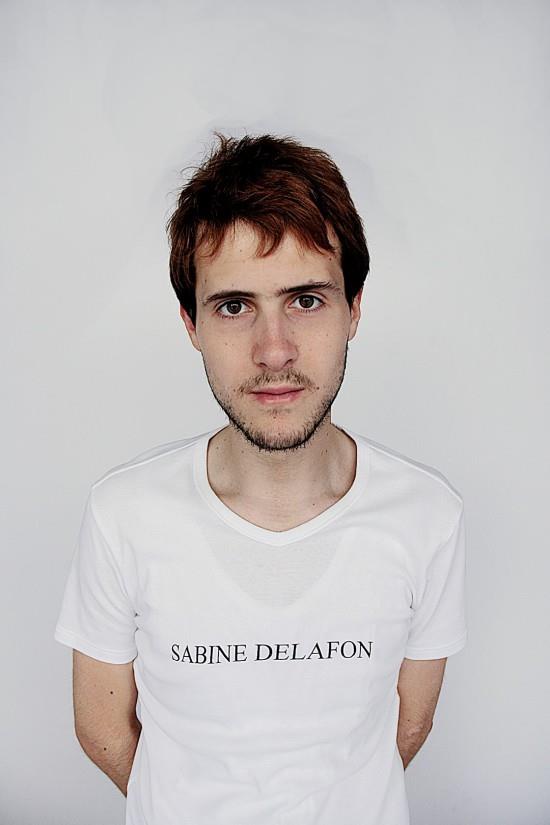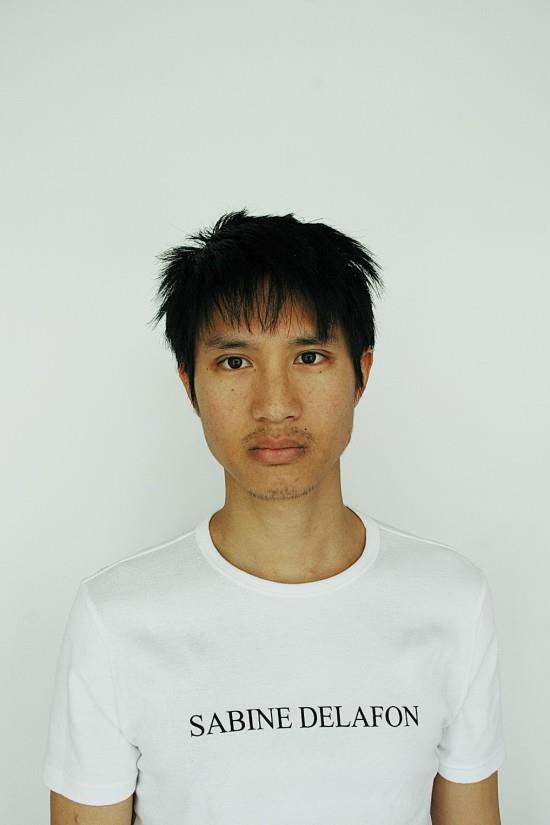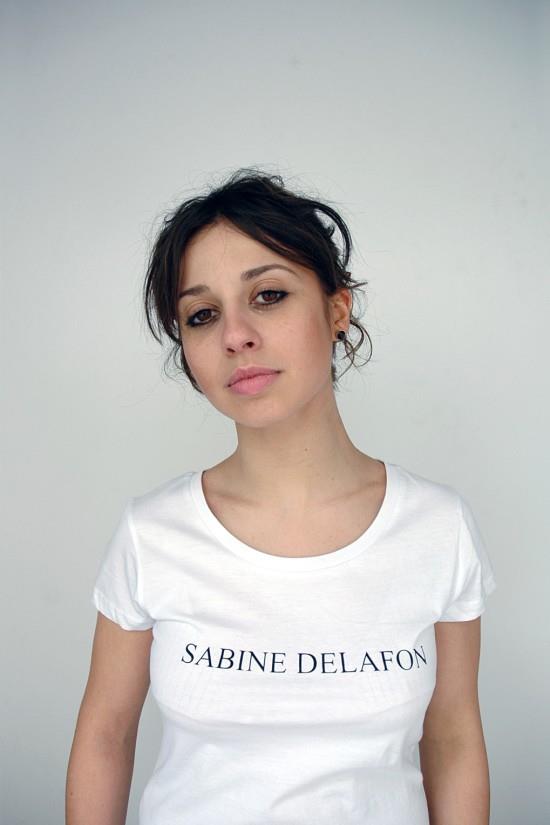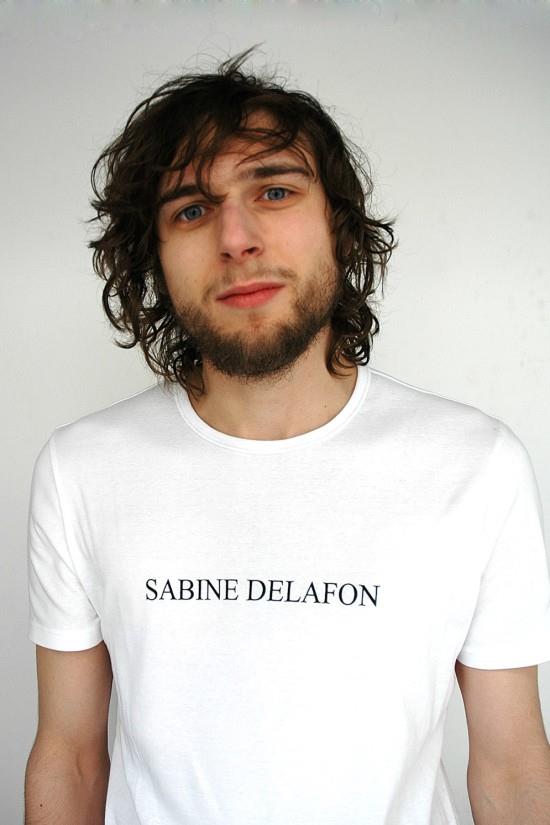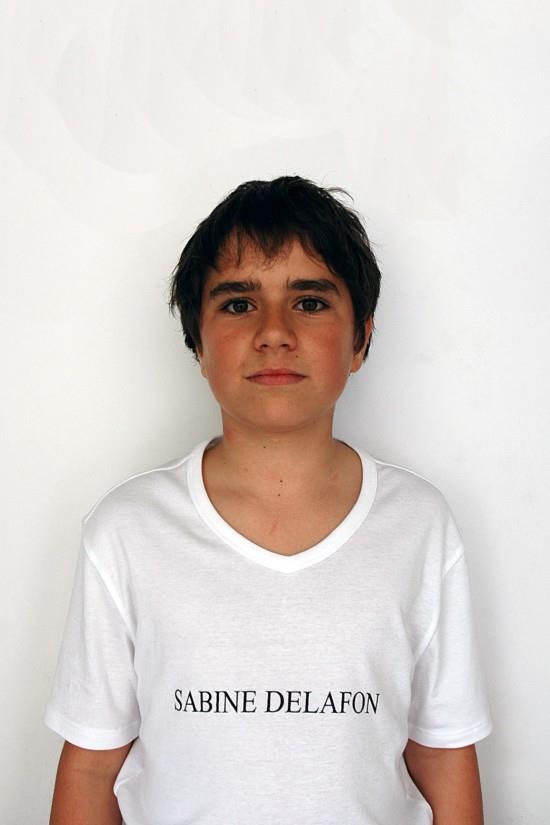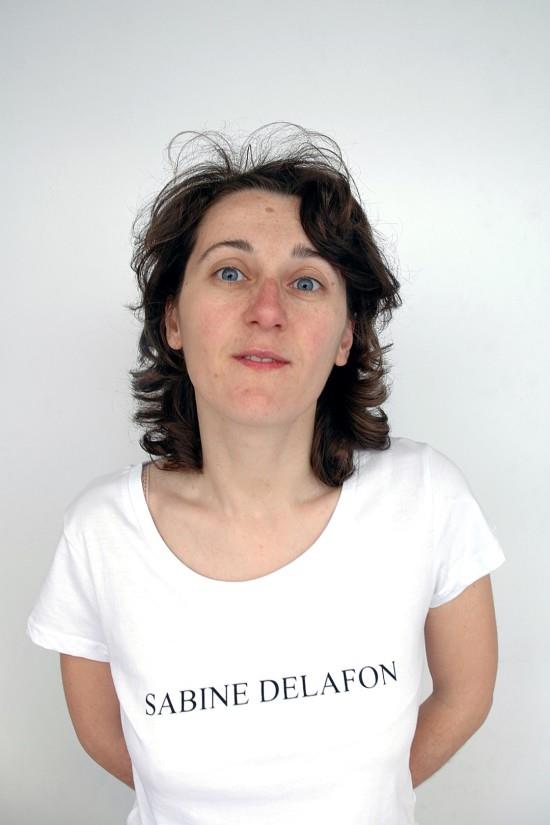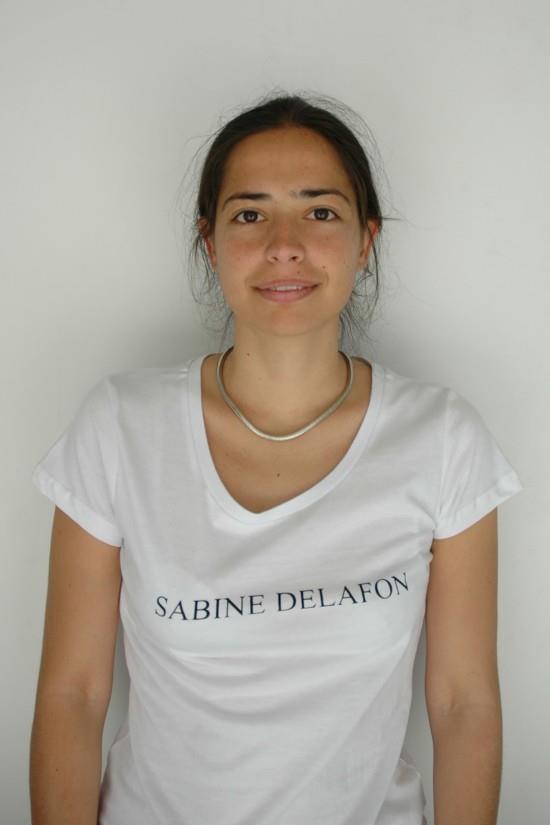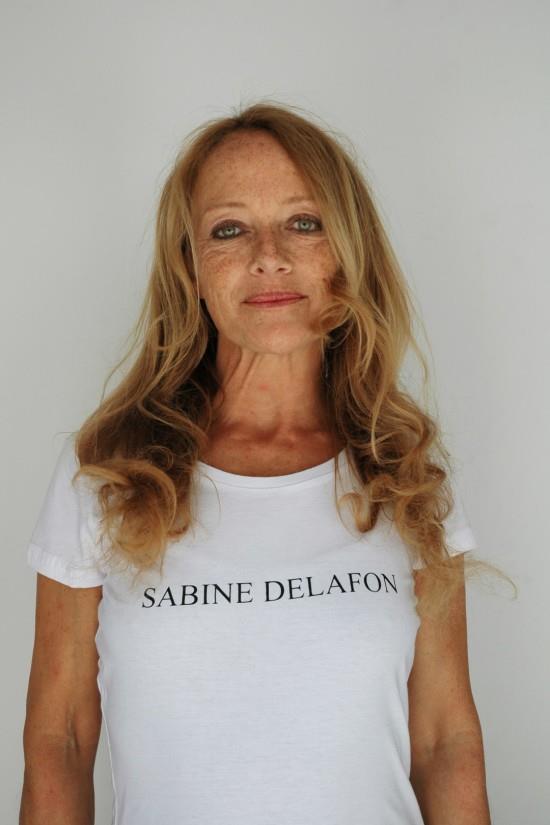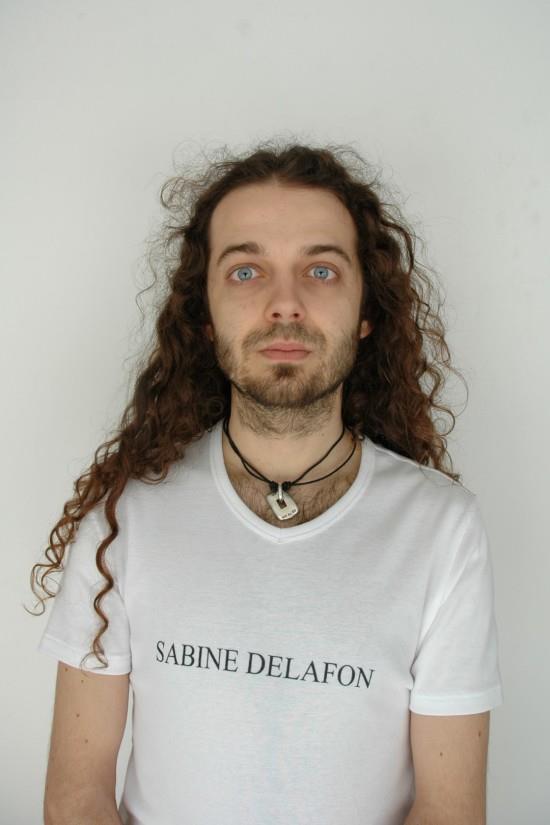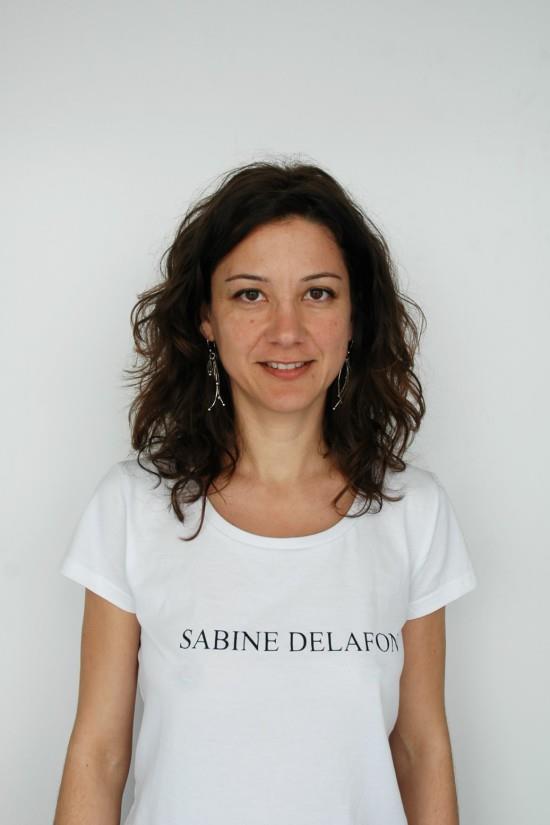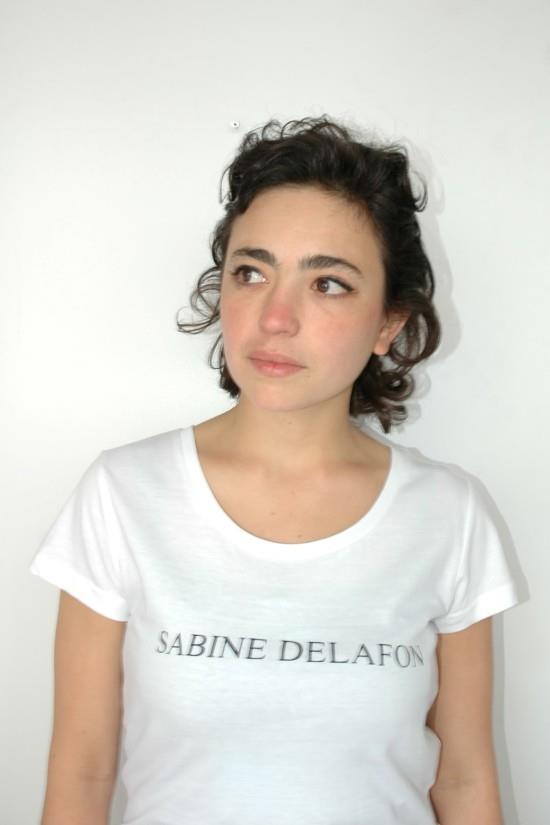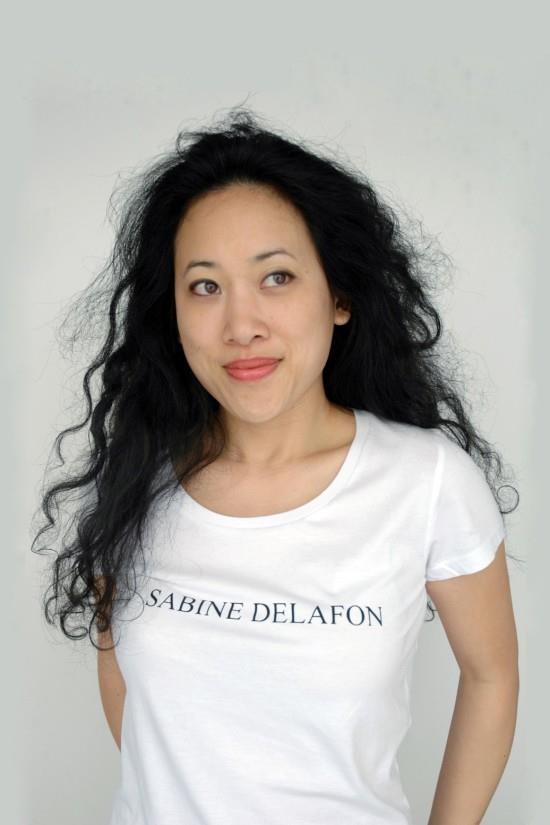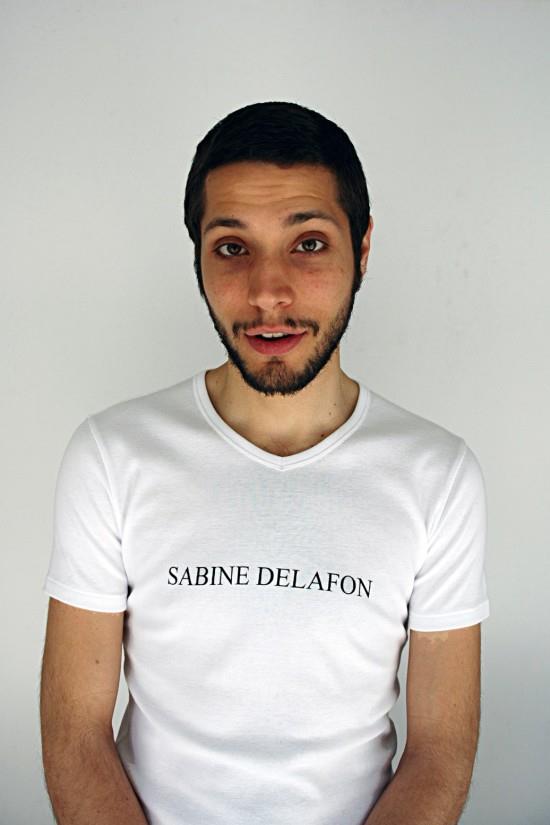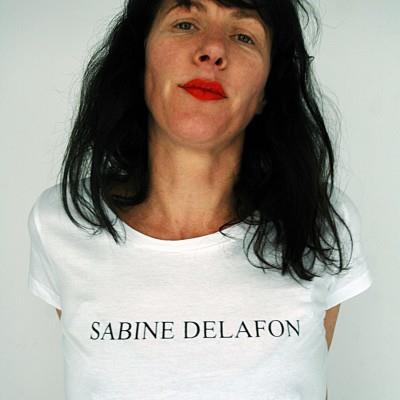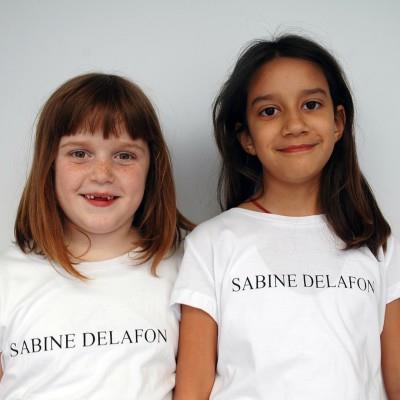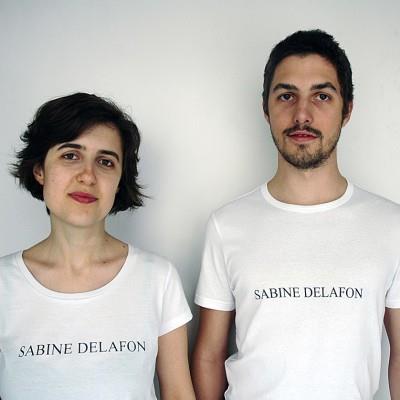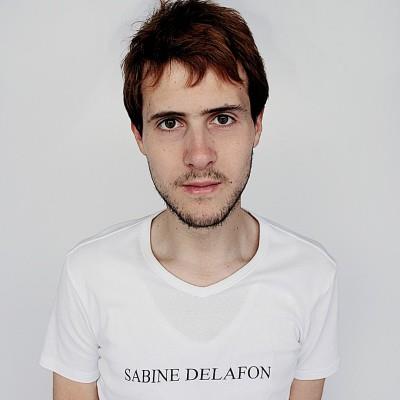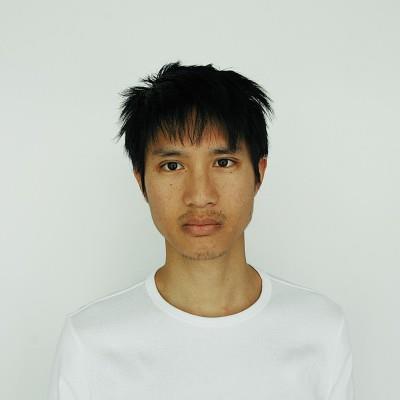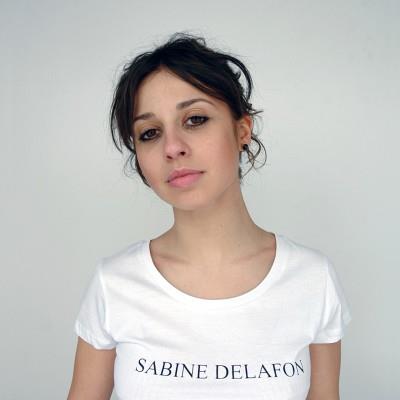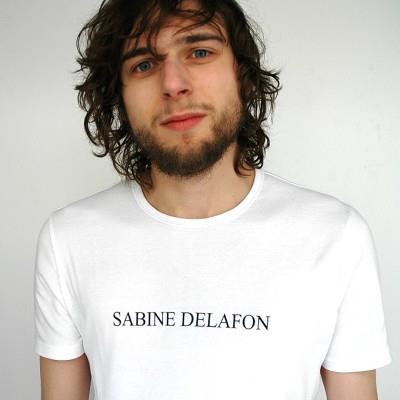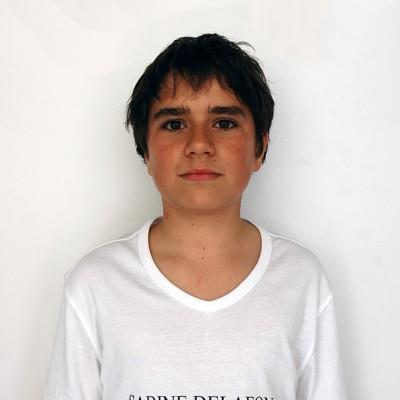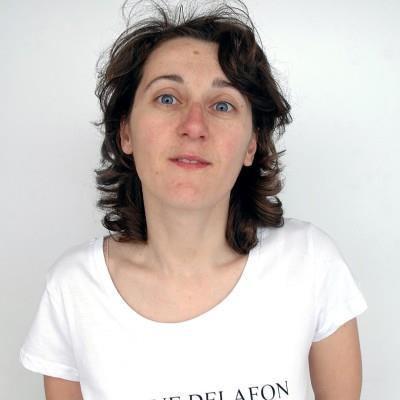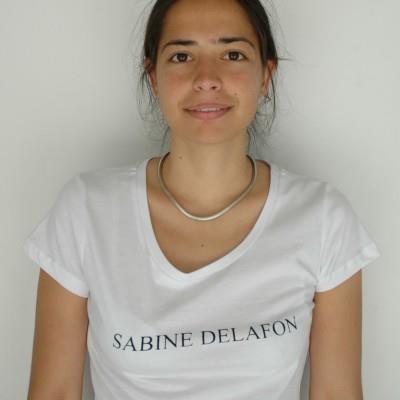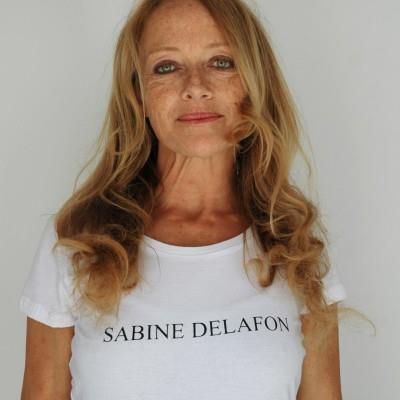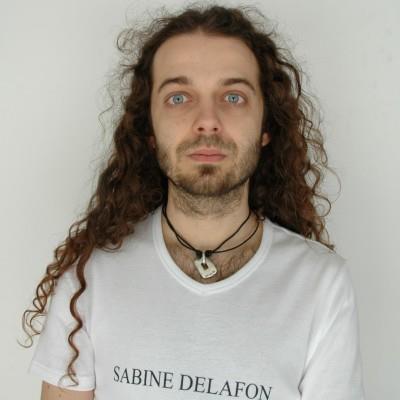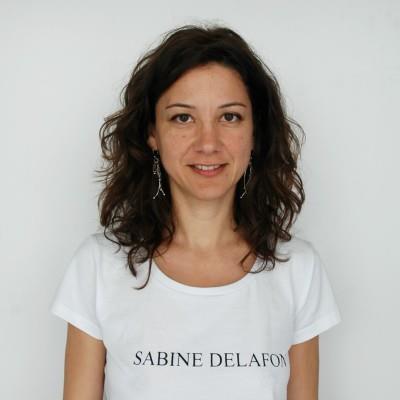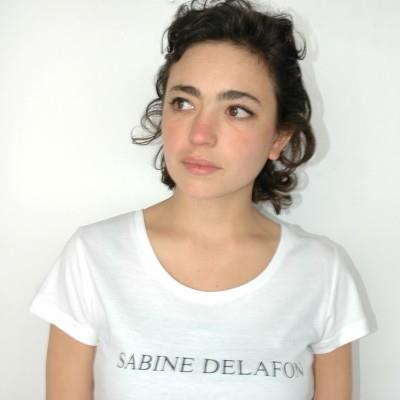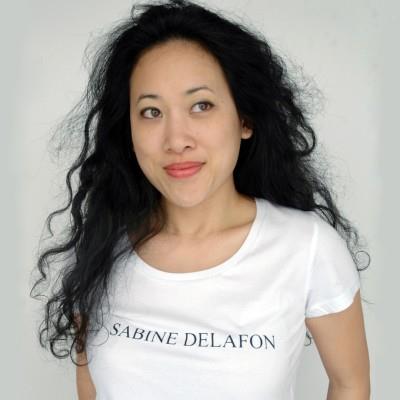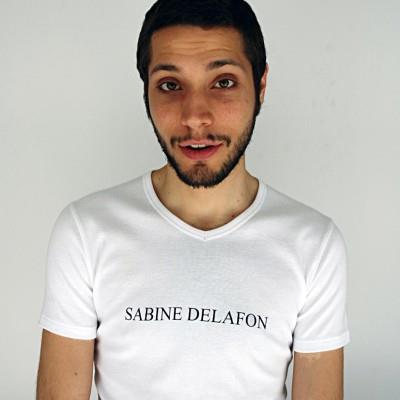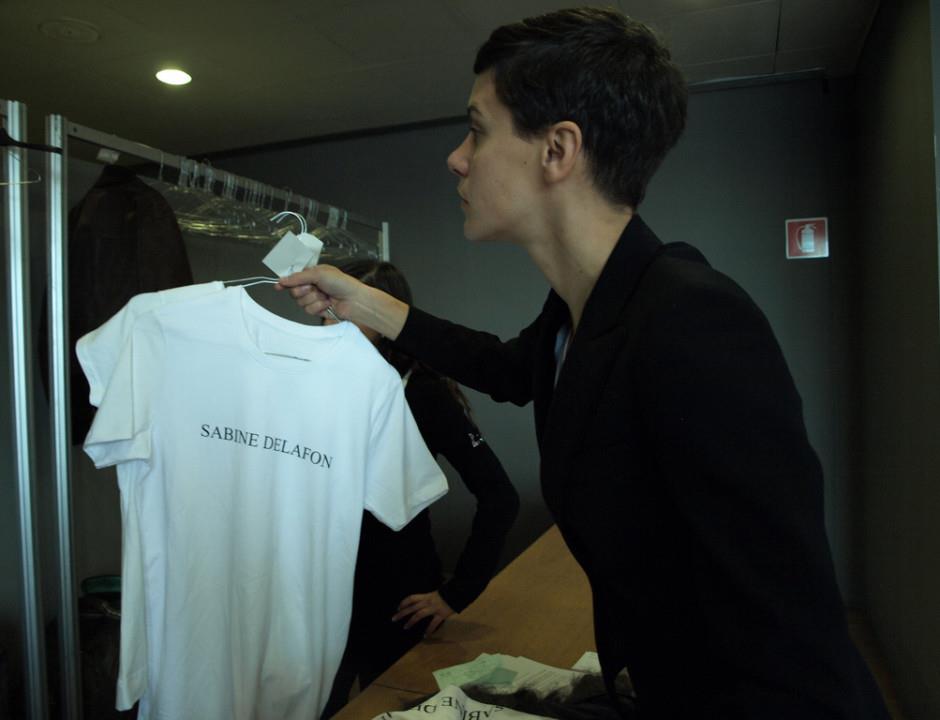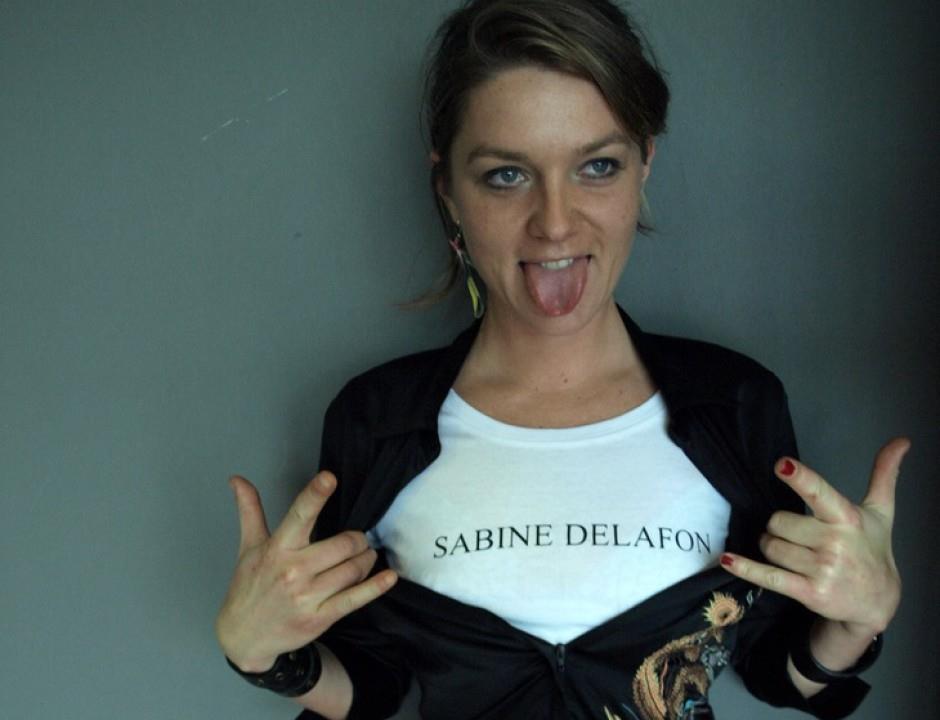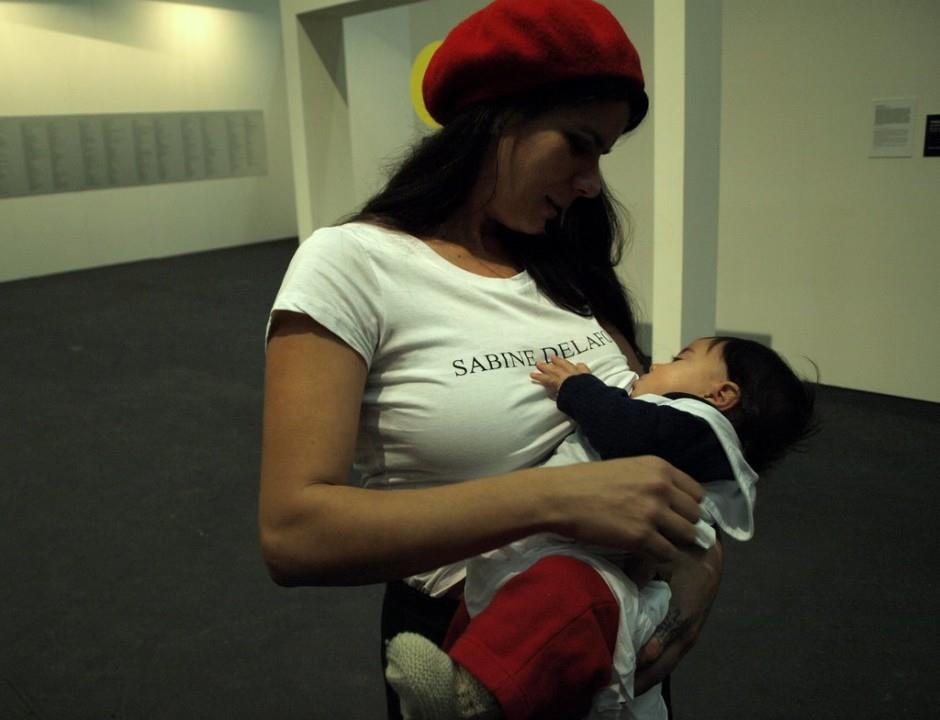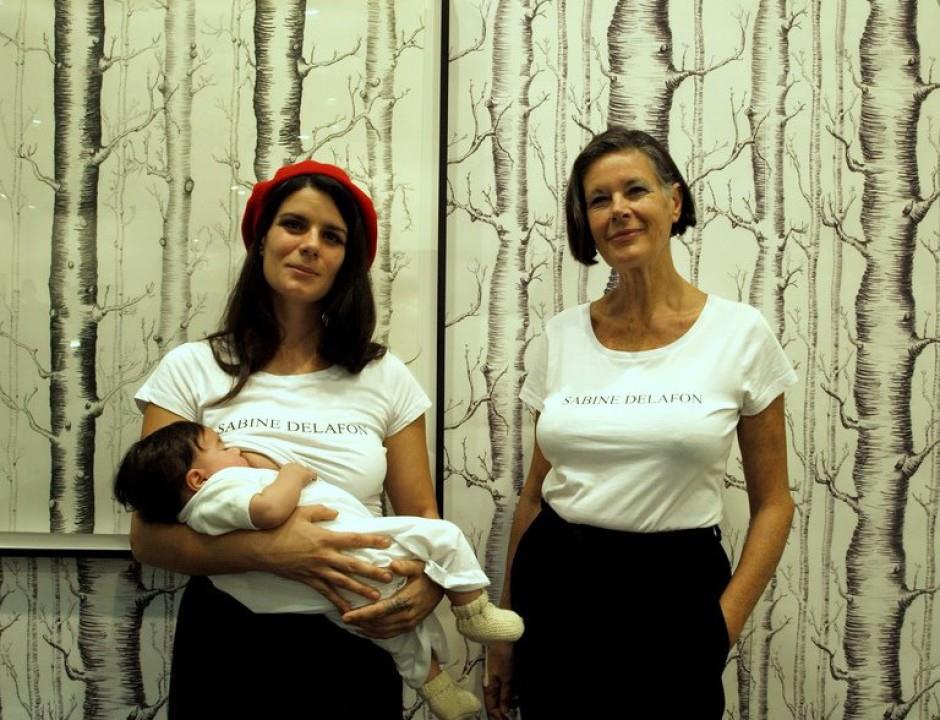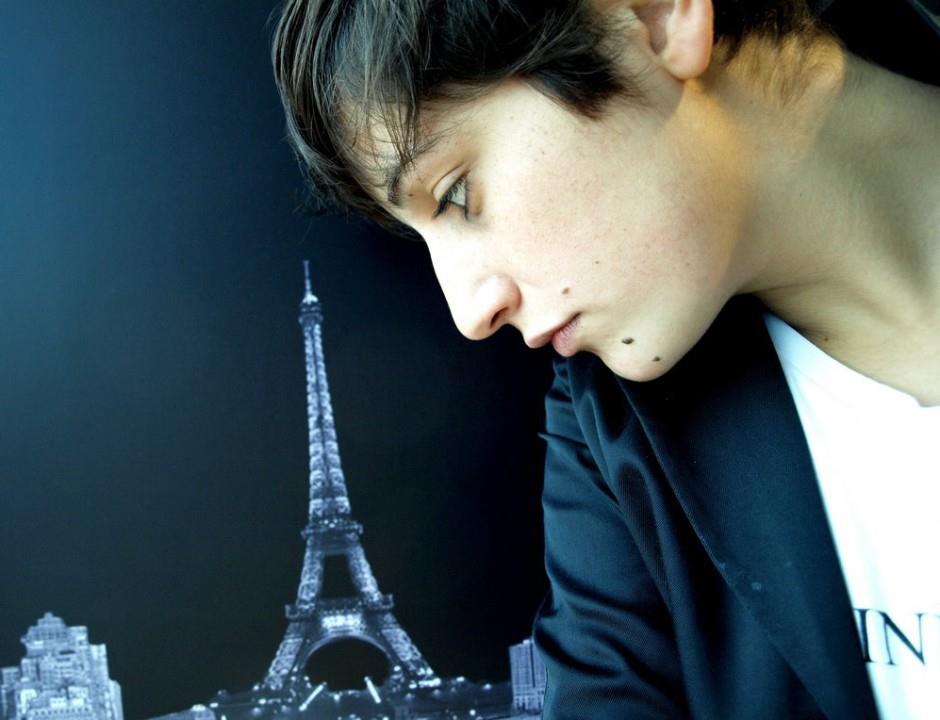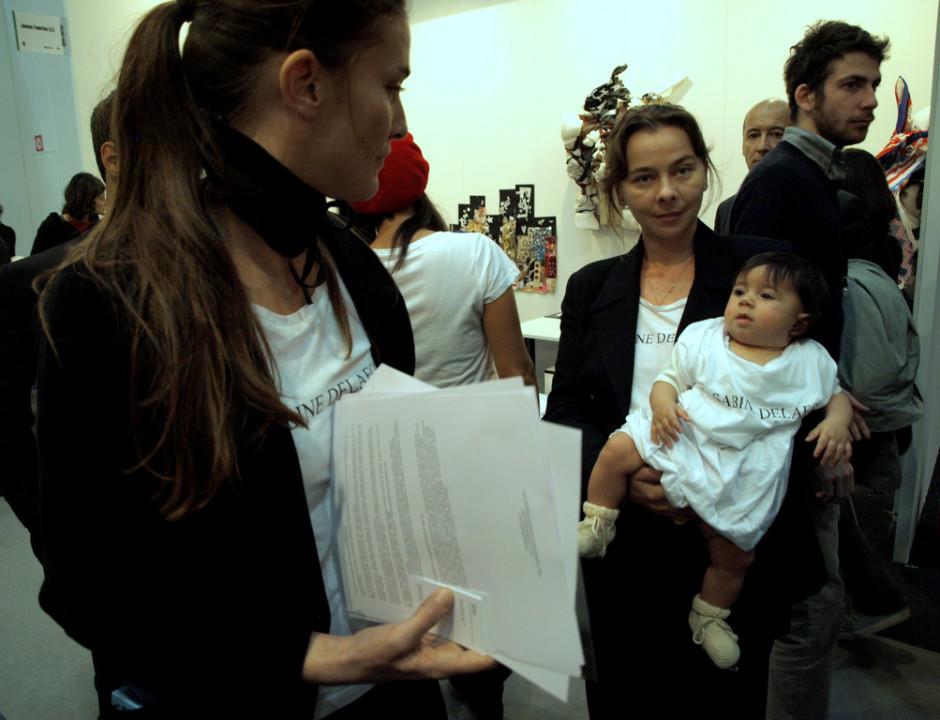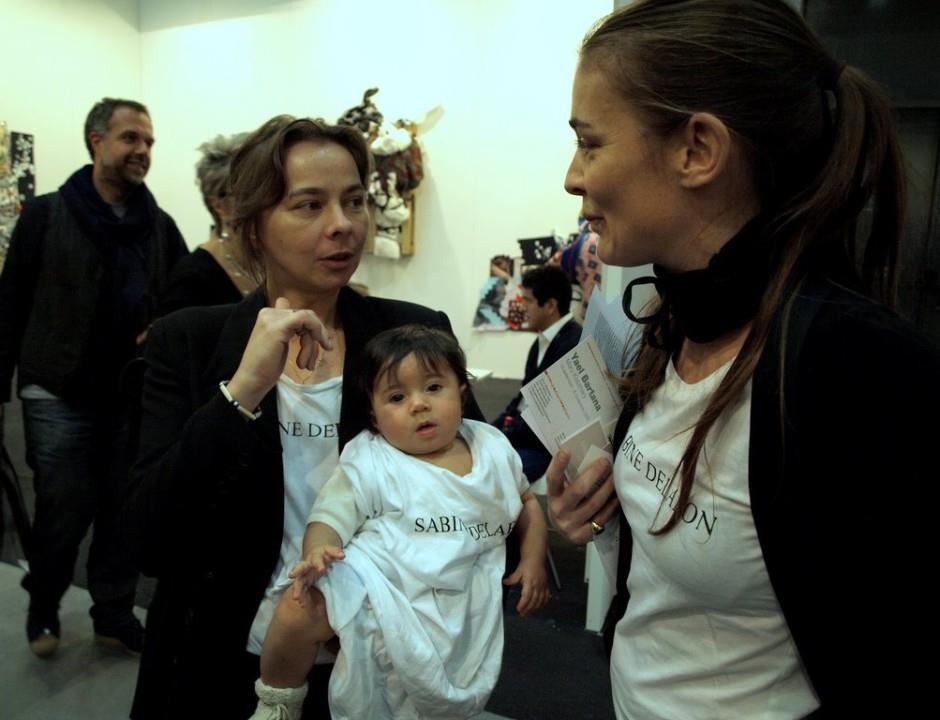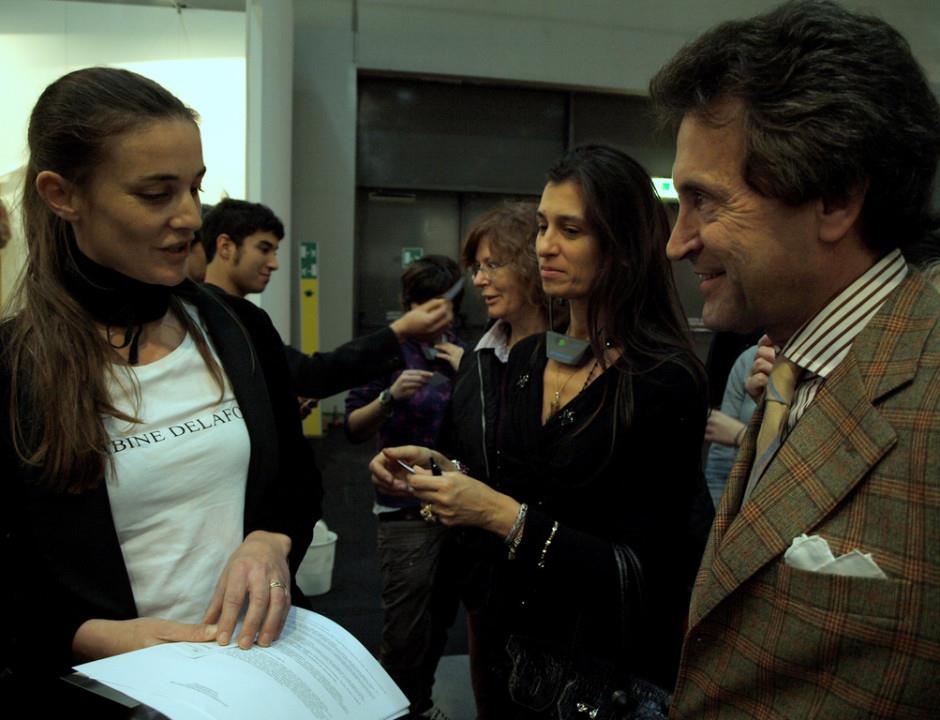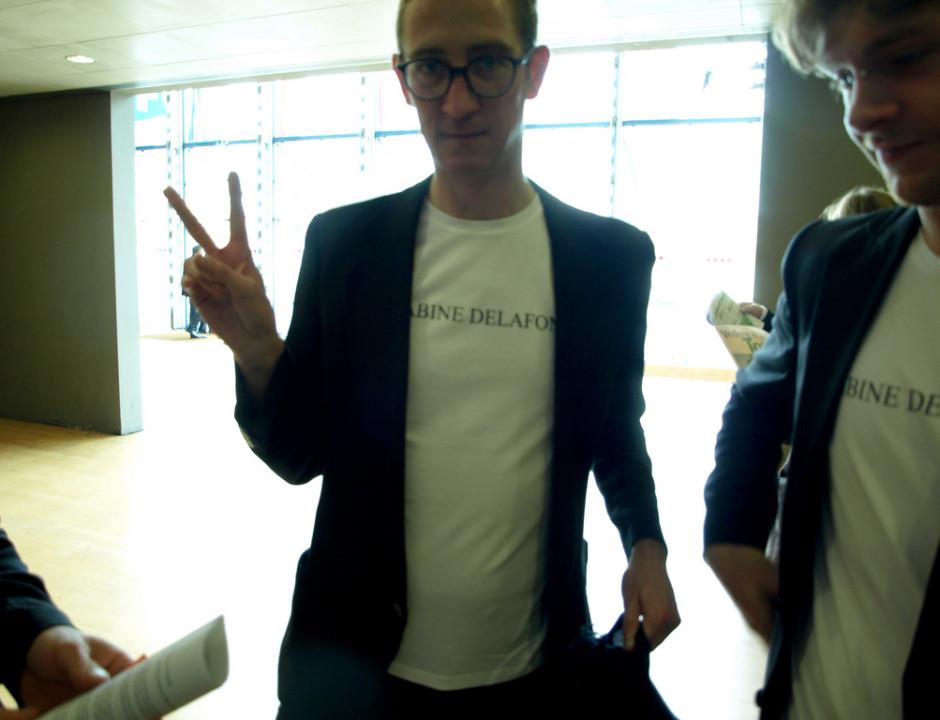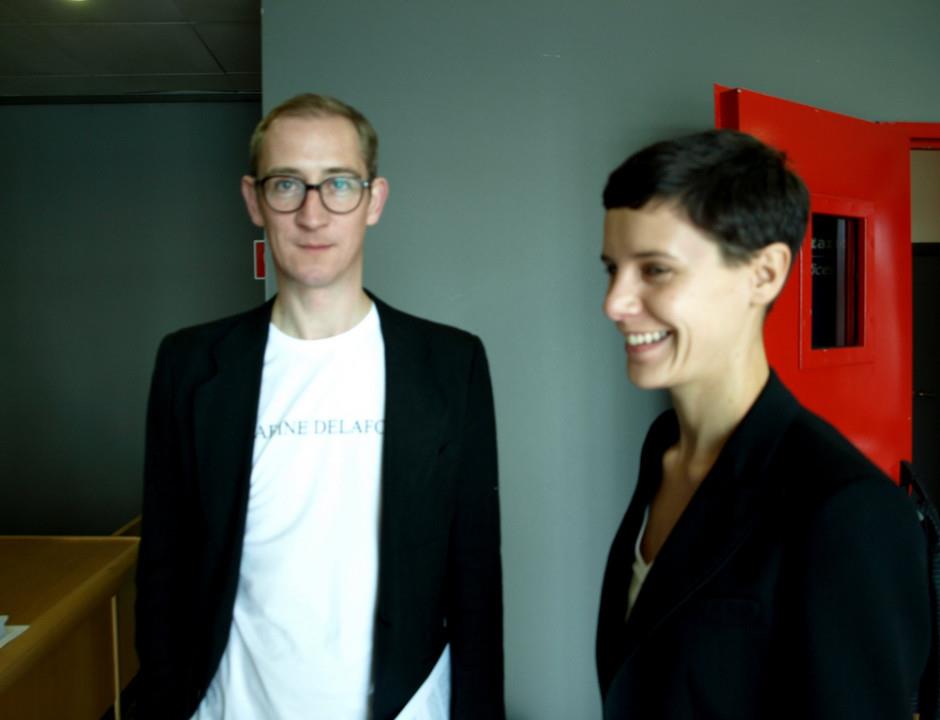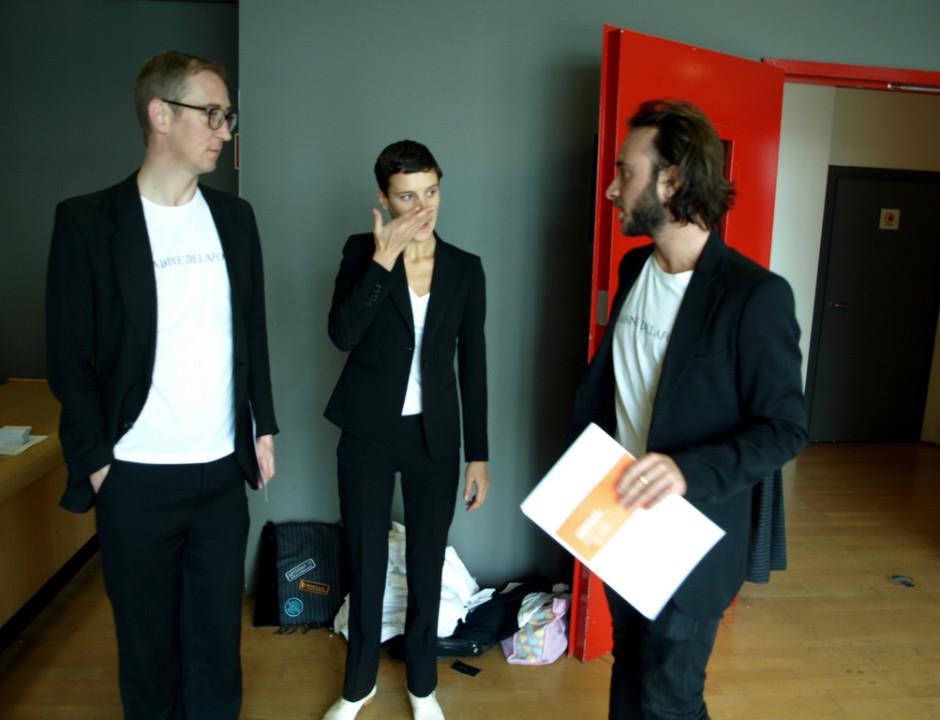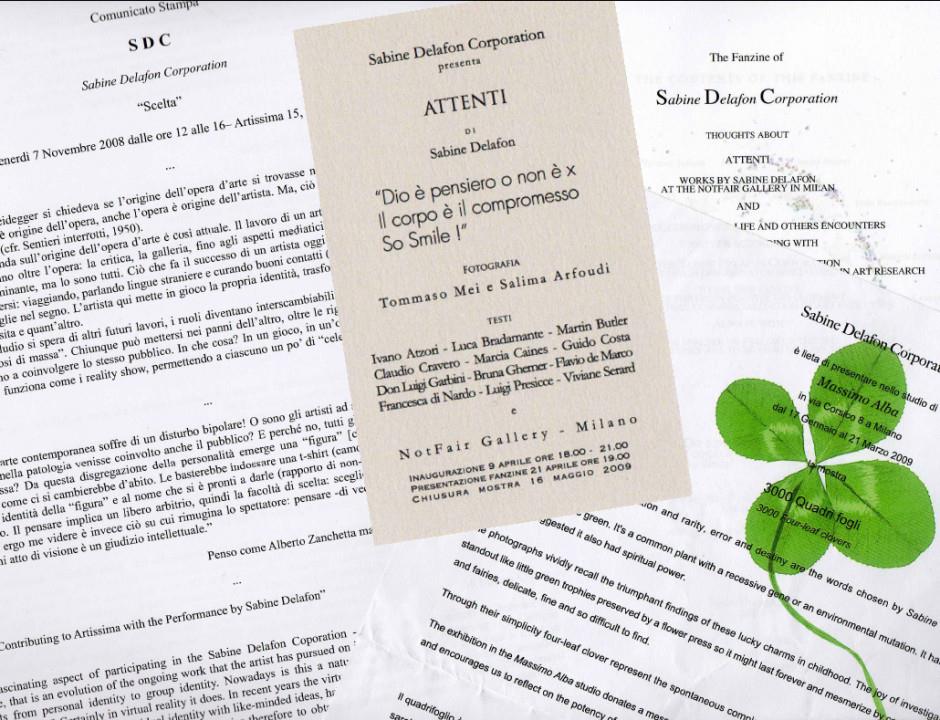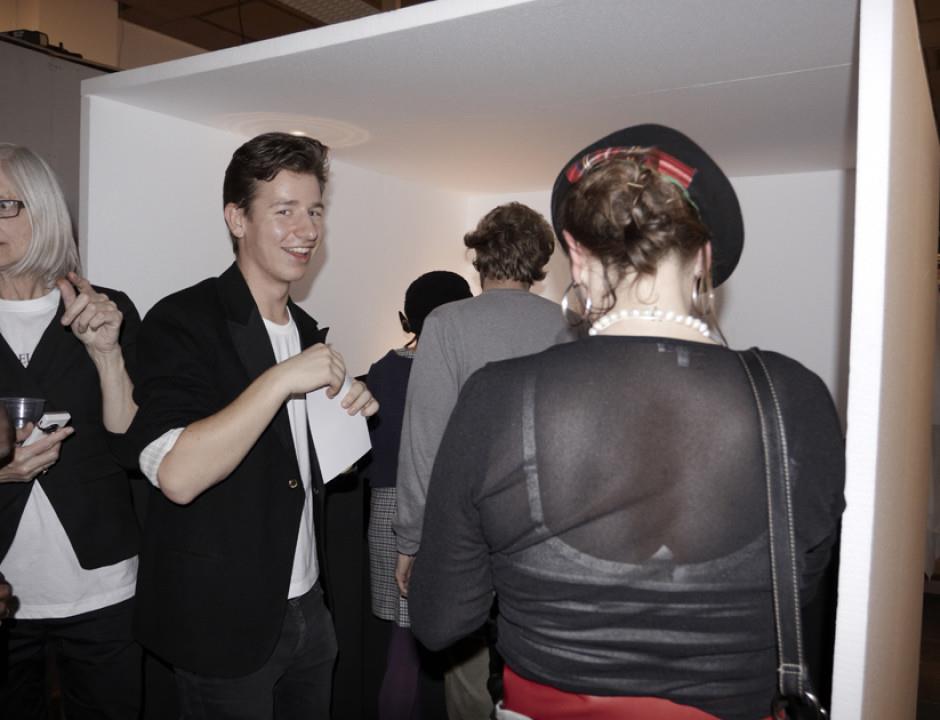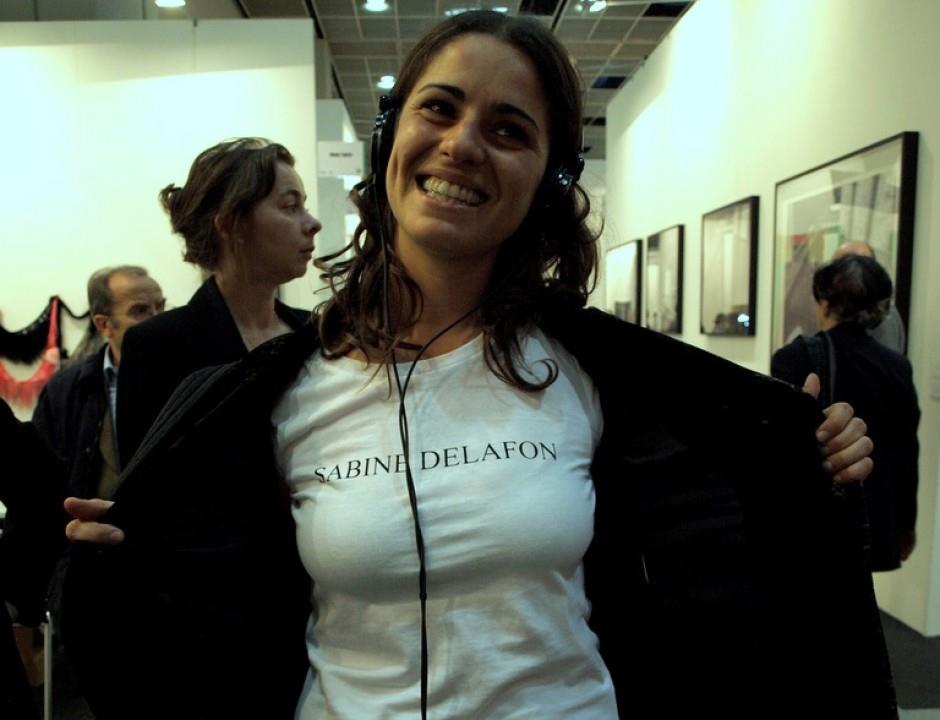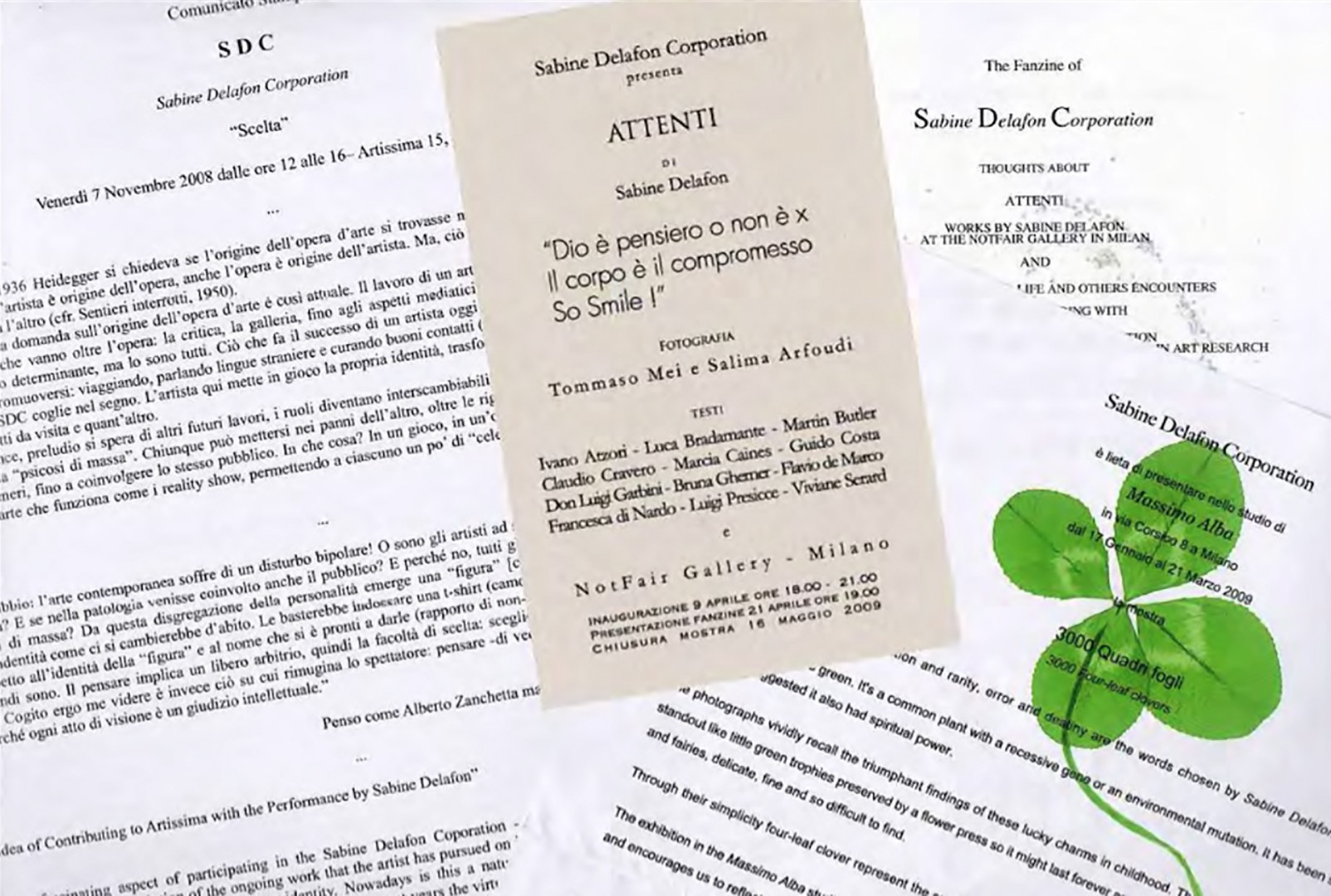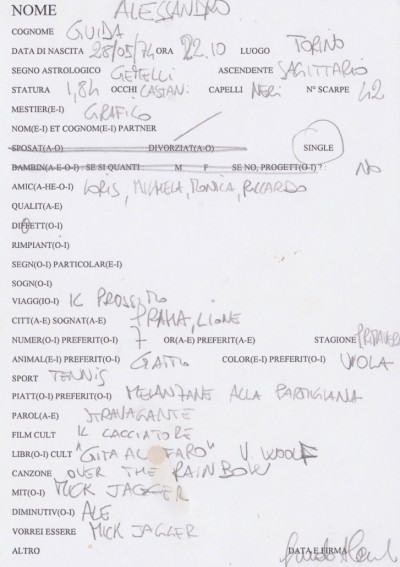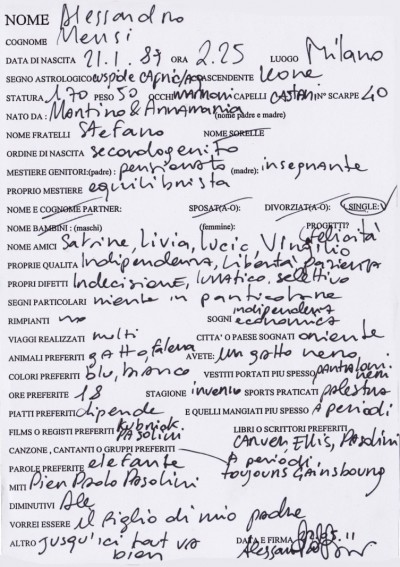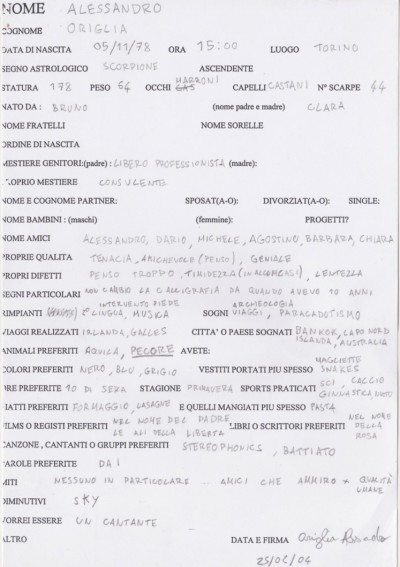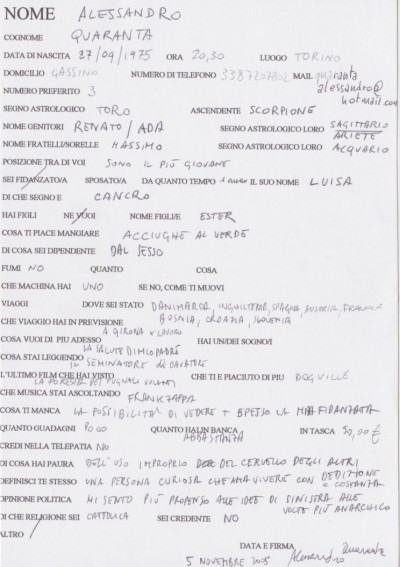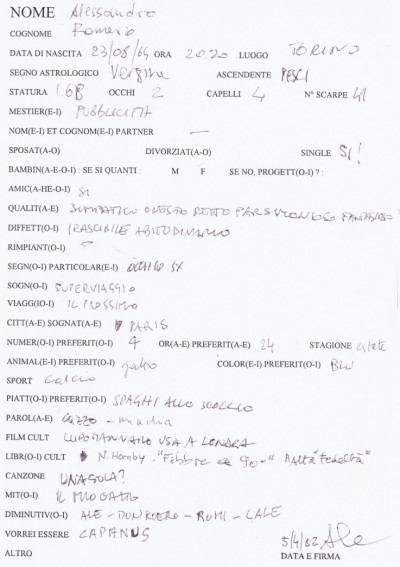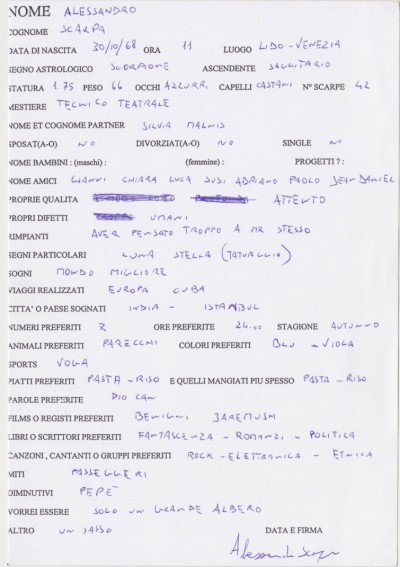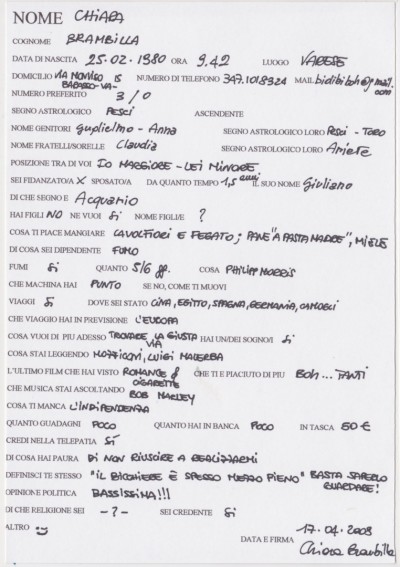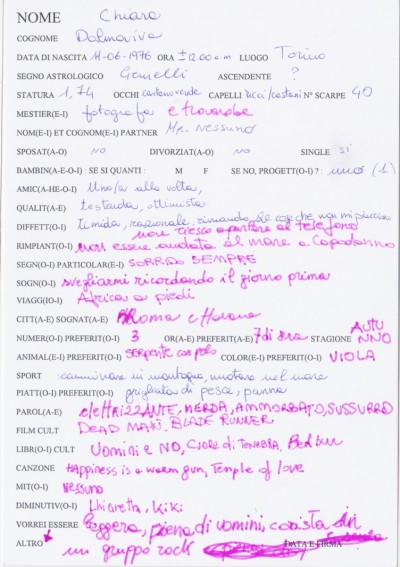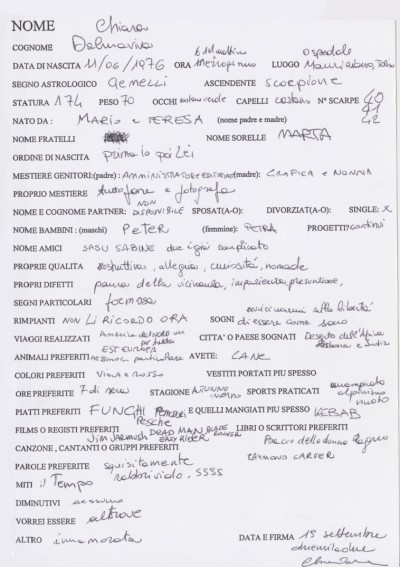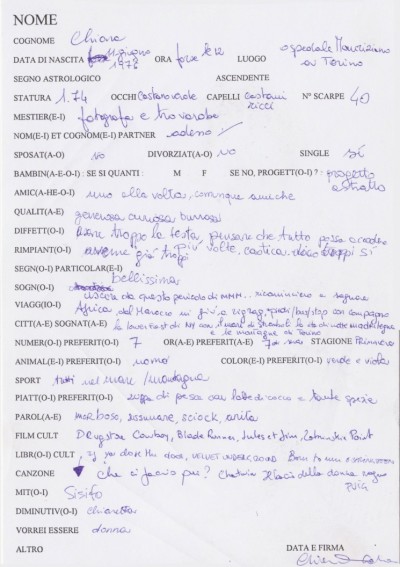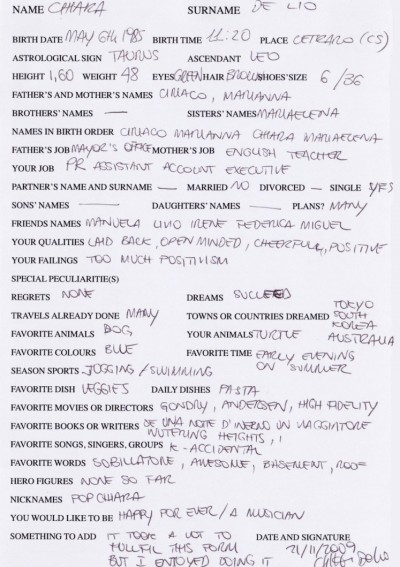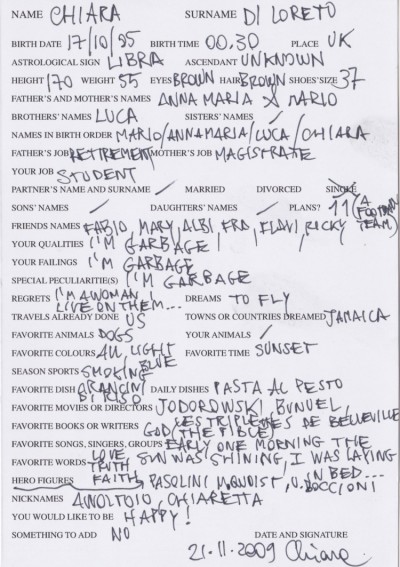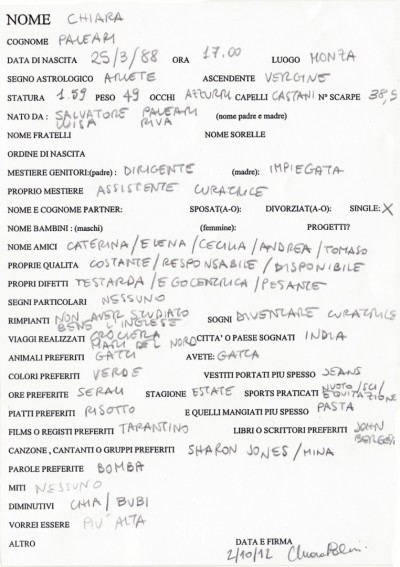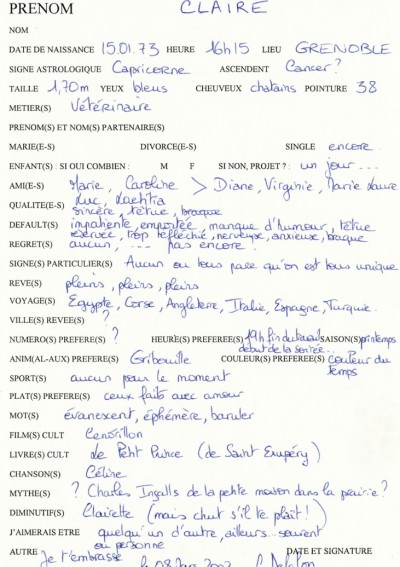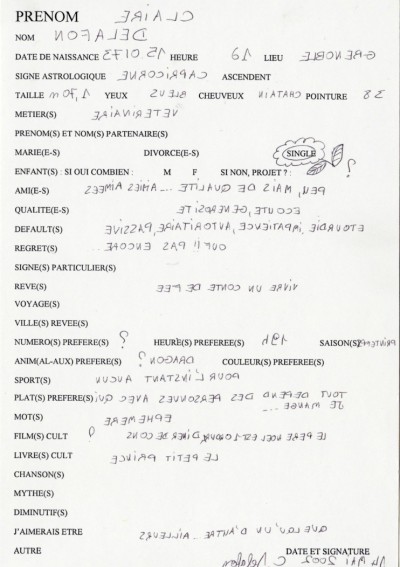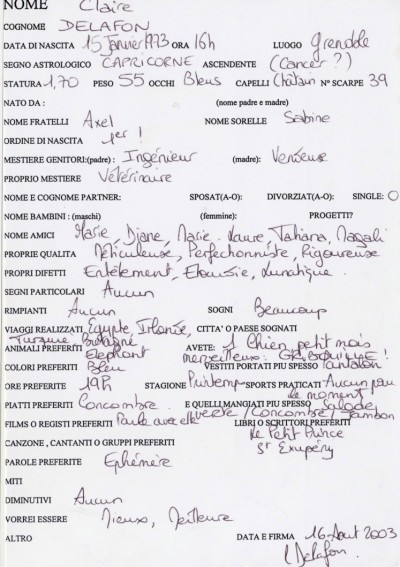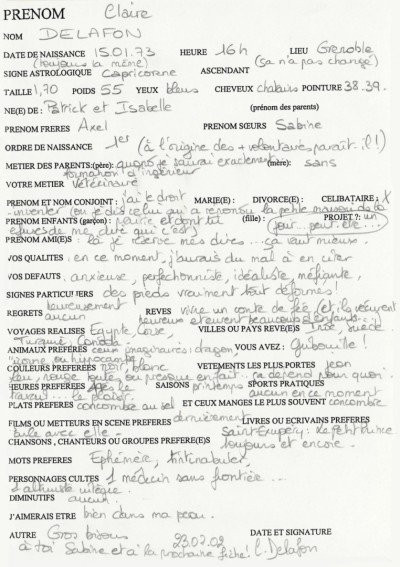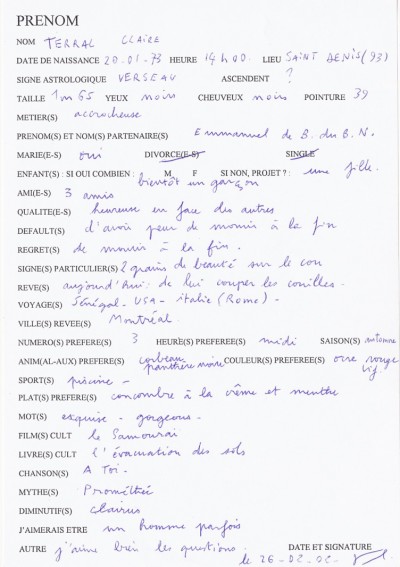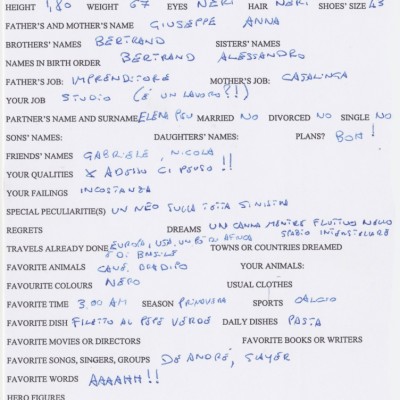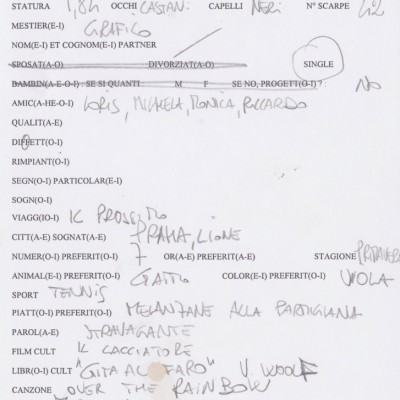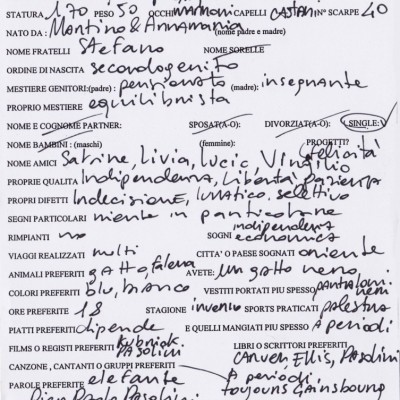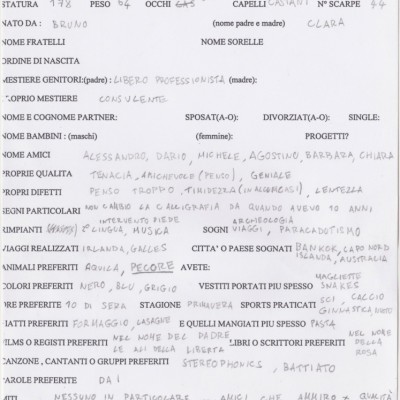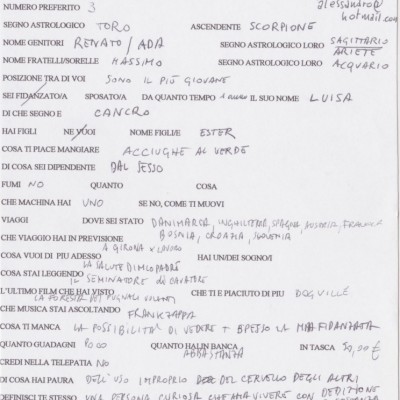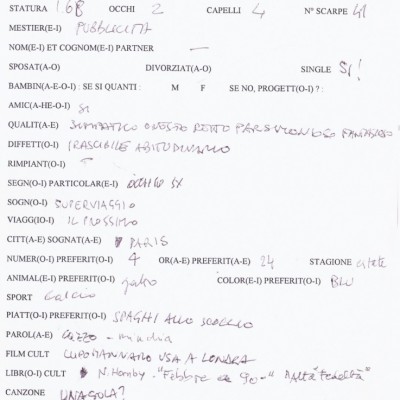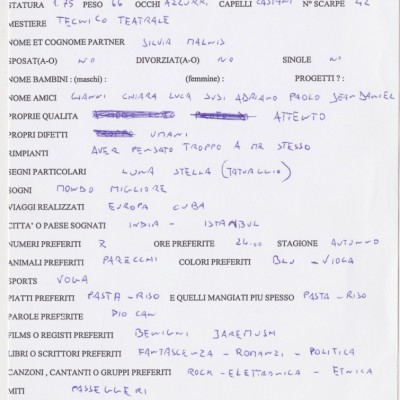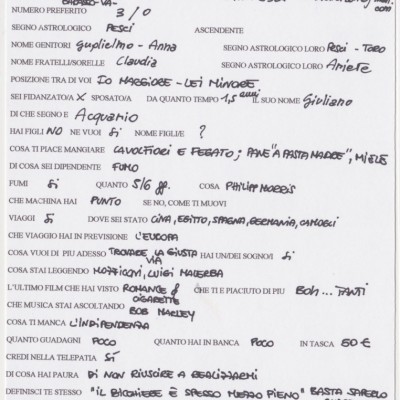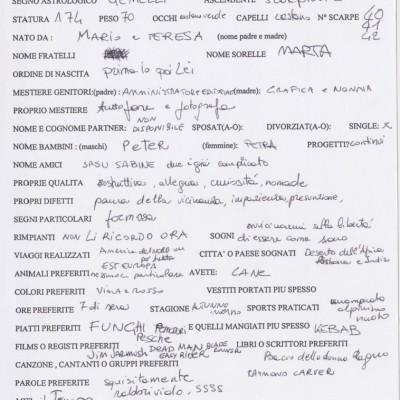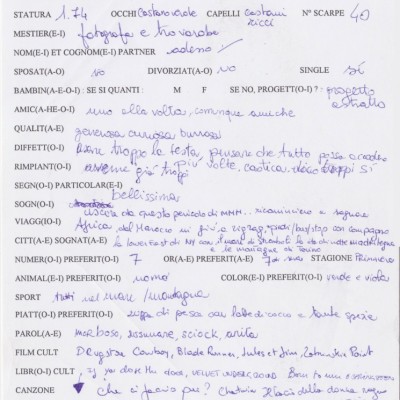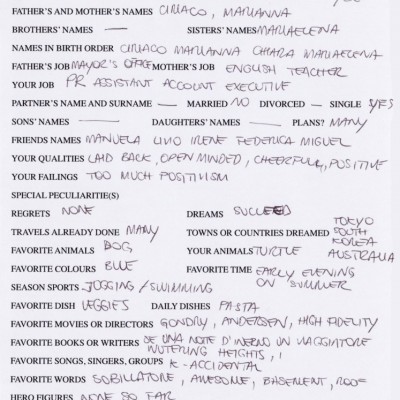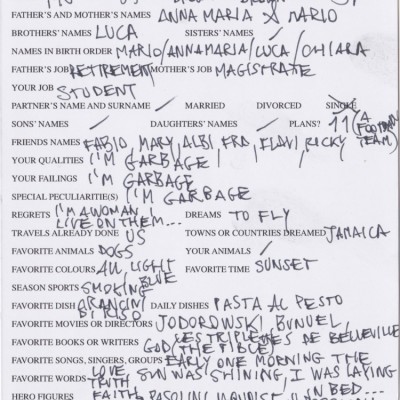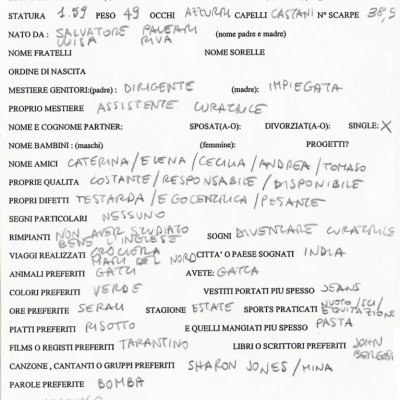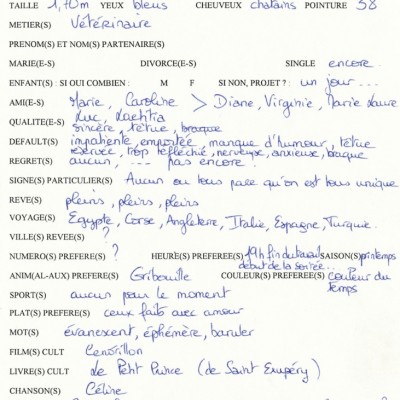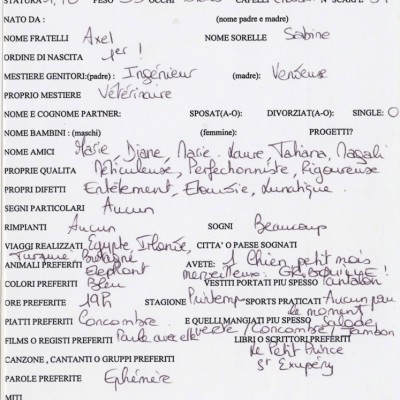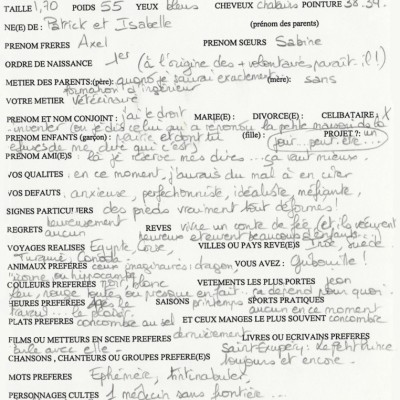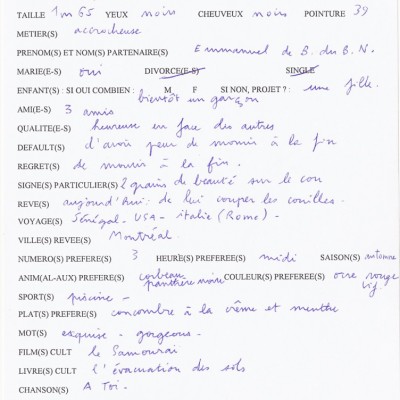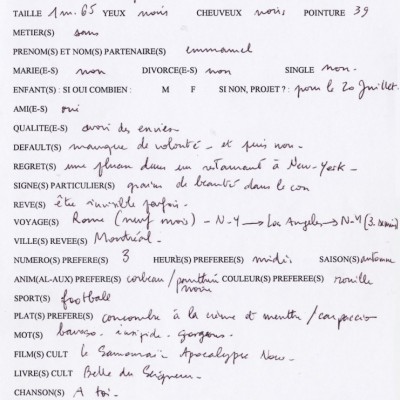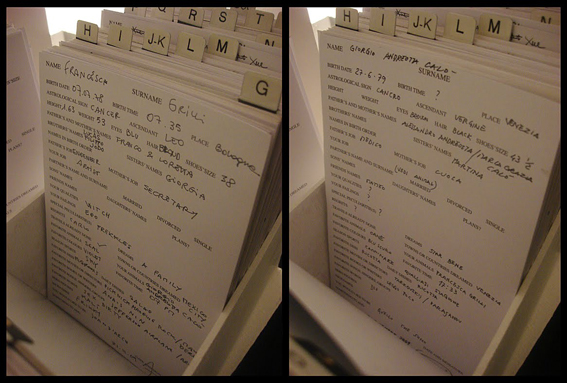Press Release
S D C
Sabine Delafon Corporation
“Scelta”
Venerdì 7 Novembre 2008 dalle ore 12 alle 16– Artissima 15, Torino
The most fascinating aspect of participating in the Sabine Delafon Coporation - SDC - in this context is because the performance, that is an evolution of the ongoing work that the artist has pursued on identity since the beginning of her artistic career, shifts from personal identity to group identity. Nowadays is this a natural evolution, does it illustrate a trend in contemporary society? Certainly in virtual reality it does. In recent years the virtual space has witnessed the birth of boundless online communities, composed of individual identity with like-minded ideas, habits, customs, beliefs and causes. The potential of this phenomena is enormous and boundless. It is easier therefore to obtain information, understanding of the individual through their social network, interests and adhesions.
The lowest common denominator is in fact networking.
The underlying strength of this: knowledge and resource sharing.
As members of these groups can the missing qualities of individualism be compensated by a shared identity? Is this practicable in art?
Is it a provocation? A way of proving to the art cirlces that market rules don’t just apply but have taken over? Can art prove its flexibility by embracing and releasing the shackles of such an elite and closed circuit? If so, can other resources provide the lacking components that condition market demands?
Same, same but different.
During the Artissima contemporary art fair, members of the SDC wear, by choice, a white T-shirt with Sabine Delafon printed on the front and visit the fair.
Marcia Caines
. . .
“In un saggio del 1936 Heidegger si chiedeva se l’origine dell’opera d’arte si trovasse nell’artista o nell’opera stessa, per concludere che se l’artista è origine dell’opera, anche l’opera è origine dell’artista. Ma, ciò che è più importante, nessuno dei due può stare senza l’altro (cfr. Sentieri interrotti, 1950).
Mai come oggi una domanda sull’origine dell’opera d’arte è così attuale. Il lavoro di un artista si compone di elementi anche tra loro disparati che vanno oltre l’opera: la critica, la galleria, fino agli aspetti mediatici e pubblicitari. Nessuno di questi elementi è da solo determinante, ma lo sono tutti. Ciò che fa il successo di un artista oggi ha infatti anche a che fare con la capacità di autopromuoversi: viaggiando, parlando lingue straniere e curando buoni contatti (umani o troppo umani che siano). In questo senso SDC coglie nel segno. L’artista qui mette in gioco la propria identità, trasformandola in un brand che produce magliette, biglietti da visita e quant’altro. Nella performance, preludio si spera di altri futuri lavori, i ruoli diventano interscambiabili, ai limiti – come dichiara Alberto Zanchetta– della “psicosi di massa”. Chiunque può mettersi nei panni dell’altro, oltre le rigide competenze professionali e le divisioni tra generi, fino a coinvolgere lo stesso pubblico. In che cosa? In un gioco, in un’opera o in un happening old style? Oppure in un’arte che funziona come i reality show, permettendo a ciascuno un po’ di “celebrità”? Di certo un evento da non perdere. “
Maria Cristina Strati
. . .
“Non c’è dubbio: l’arte contemporanea soffre di un disturbo bipolare! O sono gli artisti ad accusare i sintomi di un’incipiente schizofrenia? E se nella patologia venisse coinvolto anche il pubblico? E perché no, tutti gli operatori culturali? Si creerebbe una psicosi di massa? Da questa disgregazione della personalità emerge una “figura” [clinica]; “figura” dissociata che si cambia l’indentità come ci si cambierebbe d’abito. Le basterebbe indossare una t-shirt (camouflage) il cui valore nominale è in errore rispetto all’identità della “figura” e al nome che si è pronti a darle (rapporto di non-equivalenza). Cogito ergo sum, io penso quindi sono. Il pensare implica un libero arbitrio, quindi la facoltà di scelta: scegliere di dire e di [rap]presentarsi al pubblico. Cogito ergo me videre è invece ciò su cui rimugina lo spettatore: pensare -di vedere- senza credere -a ciò che si è visto- perché ogni atto di visione è un giudizio intellettuale.”
Penso come Alberto Zanchetta ma mi vedo come Sabine Delafon [?]
. . .
Sabine Delafon Corporation è un gruppo artistico che conta ad oggi circa 50 membri tra artisti, curatori, critici, fotografi, videomaker che formano la SDC (Sabine Delafon Corporation). La SDC prende nome dalla sua fondatrice Sabine Delafon, la cui ricerca artistica ruota attorno al concetto dell’identità evolvendosi nel tempo in un progetto collettivo: una “corporation” di persone che si completino attraverso visioni e competenze e possano talvolta sostituire la creatrice.
Individuo che si moltiplica in tanti individui complementari tra loro. SDC come personalità plurima e marchio.
Ogni membro si presenta con la propria individualità sotto un comune denominatore – la Sabine Delafon Corporation – al servizio del quale mette le prioprie competenze e peculiarità. Completandosi, dividendosi, moltiplicandosi, cambiando ruoli e identità.
. . .
Da Sabine Delafon alla Corporation : Premessa
1. Ex, progetto biografico - fotografico iniziato nel 1987. Questo lavoro comprende ad oggi 500 foto tessera.
2. I'm looking for myself, alla ricerca del mio sosia, di me stessa.
Nel 2005 l'artista mette circa 3.000 affissioni con il proprio ritratto in diverse città del mondo (Milano, Roma, N.Y, Paris) con cui cerca il proprio sosia. Non trovandolo, Delafon pensa e realizza il seguente lavoro :
3. Sabine Delafon t - shirt, 2006. Realizzazione di t-shirt con il nome SABINE DELAFON stampato frontalmente che l'artista fa indossare ad altre donne ritraendole poi fotograficamente. La documentazione si estende successivamente a uomini e bambini.
4. Questionari, lavoro iniziato nel 2002 e ancora in corso.
Distribuzione di schede questionario con i quali si cerca di indagare il concetto secondo cui il nome proprio di una persona ne possa influenzare la vita. Si tratta di un lavoro di comunicazione, di interazione, di accumulazione di dati nonché un'indagine calligrafica, dei nomi e dell'“Altro”.
5. Alléluia, 2008. Affissione di 1000 manifesti mortuari di Sabine Delafon sui muri di Milano, Torino, Roma e Napoli per festeggiare il decimo anno di attività artistica : 1998 - 2008 .
Un percorso metaforico che lega l'inizio della “scomparsa” fisica dell'artista per approdare alla :
6. Sabine Delafon Corporation.
. . .
La Sabine Delafon Corporation è composta al giorno di oggi di:
Edoardo Acotto, Enrico Ascoli, Samir Baddi, Renata Bianconi, Giorgio Bartoli, Alice Belcredi, Camilla Boemio, Lorenzo Bruni, Martin Butler, Marcia Caines, Stefania Casiraghi, Claudio Cravero, Alessandro David, Diego di Caro, Roberto Maria Clemente, Elisabetta Dotta, Maximilian Ehrhardt, Alberto Falco, François Farellacci, Claudio Ferrarin, Diletta Forgnone, Chiara Graziosi, Eva di Jorio, Francois Krygier, Lucia Leuci, Giovanni Ludeno, Antoinette Luzza, Mad, Ernesto Mameli, Daniele Mari, Domenico Olivero, Cristiana Palandri, Irma Palmieri, Monica Piseddu, Domenico Quaranta, Francesca Referza, Scalfino, Miriam Secco, Barbara Siniscalco, Maria Cristina Strati, Nicolò Taglia, Francesca Tambussi, Simona Tamassia, Massimo Torrigiani, Tiziana di Troila, Gosia Turzeniecka, Daniele Valente, Bridget Ward, Alberto Zanchetta, Maristella Caramella e Sabine Delafon.
. . .
sabine@delafon.net
www.sabinedelafon.com
http://sabinedelafoncorporation.blogspot.com/

